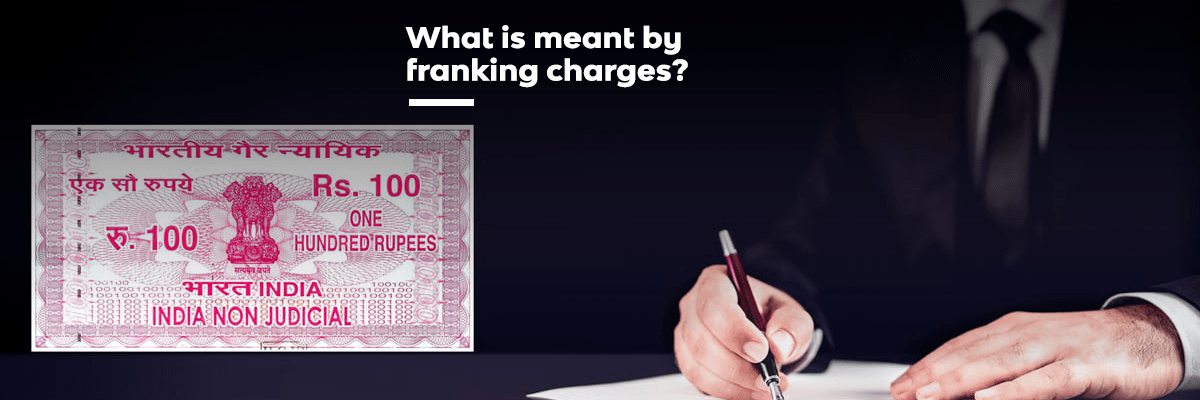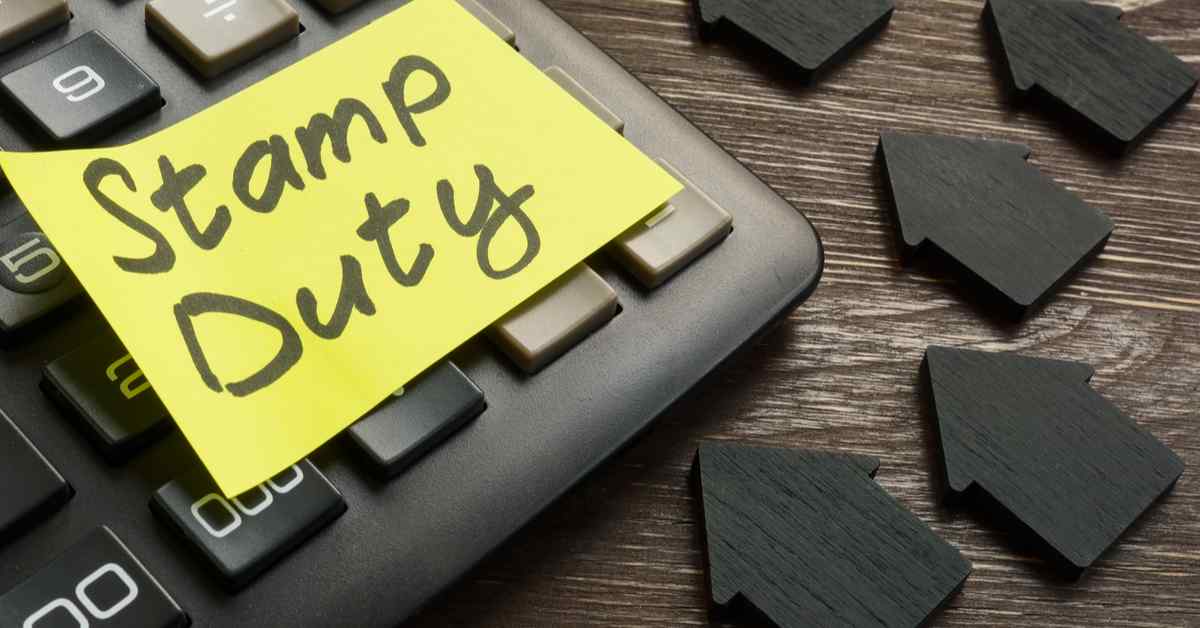Table of Contents
Quality Service Guarantee Or Painting Free

Get a rental agreement with doorstep delivery

Find the BEST deals and get unbelievable DISCOUNTS directly from builders!

5-Star rated painters, premium paints and services at the BEST PRICES!
Loved what you read? Share it with others!


Submit the Form to Unlock the Best Deals Today
Check Your Eligibility Instantly

Experience The NoBrokerHood Difference!
Set up a demo for the entire community
House Rent Lease Agreement Format: A Complete Guide to Drafting a Legal and Clear Agreement
Table of Contents
A house rent lease agreement is a legally binding document that outlines the terms and conditions agreed upon by a landlord and a tenant. It details crucial aspects such as rent amount, lease duration, property maintenance, and tenant responsibilities, providing clarity and security for both parties. Whether you're leasing out a property or a tenant searching for a secure rental, understanding a comprehensive lease agreement and the house rent lease agreement format is essential to avoid potential disputes.
This article explores the key elements of a house rent lease agreement, provides a comprehensive format, and offers tips for creating a balanced contract that safeguards the interests of both landlords and tenants.
Key Components of a House Rent Lease Agreement Format
A House Rent Lease Agreement ensures that both parties are clear about their rights and responsibilities. Here are the key components that are there in a house rent lease agreement format:
Quality Service Guarantee Or Painting Free

Get a rental agreement with doorstep delivery

Find the BEST deals and get unbelievable DISCOUNTS directly from builders!

5-Star rated painters, premium paints and services at the BEST PRICES!
1. Property Details
Clearly describe the house, including its location, size, and type. For instance, "The property located at 123 Main Street, Anytown, India, is a three-bedroom, two-bathroom single-family home." Including additional features such as the presence of a garage, garden, or any special amenities can be helpful.
2. Lease Term
Specify the start and end dates of the lease, along with any renewal options and termination clauses. For example, "The lease term begins on January 1, 2023, and ends on December 31, 2023, with an option to renew for an additional year upon mutual agreement." Also, include conditions under which the lease can be terminated early by either party.
3. Rent Payment Terms
State the monthly rent amount, due date, and acceptable payment methods. For instance, "Monthly rent of Rs. 1,200 is due on the 1st of each month. Payments can be made via bank transfer or check." Specify any penalties for late payment and whether there is a grace period.
4. Security Deposit
Detail the security deposit amount, conditions for its use, and the refund process. For example, "A security deposit of Rs. 1,200 is required. It will be refunded within 30 days of lease termination, provided no damage beyond normal wear and tear is found." Clarify the conditions under which deductions may be made from the deposit.
5. Maintenance and Repair Responsibilities
Specify which party is responsible for routine maintenance and repairs. For instance, "The tenant is responsible for minor repairs and maintenance, such as replacing light bulbs and maintaining the yard. The landlord will handle major repairs, such as plumbing and electrical issues." Also, include the process for reporting and addressing repair issues.
6. Additional Clauses
Include any restrictions on property alterations, subletting policies, and other significant conditions. For example, "No alterations to the property are allowed without written consent from the landlord. Subletting is not permitted. The tenant must adhere to all community rules and regulations." Additionally, it covers policies on pet ownership, smoking, and other pertinent rules.
Different Types of Home Lease Agreement Formats
Home lease agreements come in various formats, each catering to different needs and circumstances. Understanding the types of home lease agreement formats can help you choose the right lease agreement for your situation. Here are the primary types and their details:
1. Fixed-term Lease Agreements
A fixed-term lease agreement is a contract where the tenant agrees to rent a property for a specified period, usually ranging from six months to a year or more. During this period, the terms, conditions, and rent amount are fixed and cannot be changed without mutual consent.
- Stability: Guarantees a fixed rental period, providing stability for both tenant and landlord.
- Predictable Rent: The rent amount is fixed for the duration, protecting tenants from unexpected rent increases.
- Long-Term Security: Ensures the tenant has a secured place to live for the agreed term.
- Legal Protection: Clearly defined terms protect both parties, minimising disputes.
- Easier Budgeting: Fixed rent helps tenants plan their finances better.
2. Month-to-Month Lease Agreements
A month-to-month lease agreement is a flexible rental contract that automatically renews each month until either party terminates it. This lease offers greater flexibility but can also come with higher rent due to the shorter commitment.
- Flexibility: Allows tenants to move out with short notice, usually 30 days.
- Adaptability: Landlords can adjust rent and lease terms more frequently to match market conditions.
- Short-Term Living: Ideal for tenants needing temporary housing.
- No Long-Term Commitment: Beneficial for both parties if unsure about long-term plans.
- Opportunity for Property Use: Landlords can reclaim the property sooner for personal use or renovation.
3. Commercial vs. Residential House Lease Contracts
Here is a comparison table highlighting the differences between residential and commercial lease agreements:
| Parameter | Residential Lease | Commercial Lease |
| Purpose | Living accommodation | Business operations |
| Lease Term | Generally shorter, often 1 year | It can be longer, ranging from 1 to 10 years or more |
| Flexibility | More flexible, allowing for easier termination | Less flexible, often with fixed terms and conditions |
| Maintenance | The landlord usually responsible for major repairs | Tenant is often responsible for maintenance and repairs |
| Rent Control Laws | Often subject to rent control laws | Typically not subject to rent control laws |
| Security Deposits | Usually lower deposits | Higher security deposits |
| Usage Restrictions | Primarily residential use | Specific to business and commercial activities |
| Legal Protections | More legal protections for tenants under housing laws | Less legal protection, governed by commercial contract laws |
How to Draft a House Rent Lease Agreement Format
To draft a house rent lease agreement format, start by understanding that a lease agreement is a legally binding document that defines the terms and conditions between a landlord and tenant for renting a property. A well-drafted lease protects both parties, minimises potential disputes, and ensures a smooth rental relationship.
1. Title and Date
Begin with a clear title, like "Residential Lease Agreement," and include the agreement's effective date. This establishes the document's purpose and indicates when the agreement becomes effective.
2. Parties Involved
Clearly identify the landlord and tenant, including their full names and contact details. This ensures that both parties are accurately identified and legally bound by the lease agreement.
3. Property Details
Describe the rental property, including the address and any specific apartment or unit number, to avoid confusion. This detailed description helps ensure both parties know the exact property being leased.
4. Lease Term
Define the lease period (e.g., one year, six months, month-to-month) with the start and end dates. This clarifies the duration of the rental arrangement and sets expectations for both parties.
5. Rent Amount and Payment Terms
Specify the monthly rent amount, due date, accepted payment methods, and any late fees if the rent is overdue. Clearly outlining these details helps prevent disputes over rent payments.
6. Security Deposit
Outline the security deposit amount, refund conditions, and any deductions that may apply upon lease termination. This ensures both parties understand how the deposit will be handled and under what conditions it will be refunded.
7. Utilities and Maintenance
Detail which utilities (water, electricity, gas) are the tenant's responsibility and outline maintenance duties for both parties. This delineates responsibilities and helps prevent misunderstandings about utility payments and property upkeep.
8. Rules and Regulations
Include specific rules, like pet policies, noise restrictions, or restrictions on subletting, that apply to the rental property. Clear rules help maintain order and prevent conflicts during the lease term.
9. Inspection and Termination Clause
Specify inspection conditions, renewal terms, and the process for terminating the lease, including notice periods. This outlines how and when the lease can be ended or renewed, ensuring both parties know the procedures.
10. Signatures of Both Parties
Conclude with spaces for both parties' signatures, ensuring they acknowledge and agree to the terms stated. This final step makes the agreement legally binding and confirms both parties' commitment to the terms.
How to Customise Templates Based on Regional Requirements?
When drafting a lease agreement, adjust templates according to the local laws of the property’s region. For instance:
1. State Laws on Security Deposits
Some states have caps on the security deposit amount or timelines for returning it. This ensures tenants get their deposits back promptly and protects them from excessively high deposit demands.
2. Notice Periods
Local regulations may mandate specific notice periods for lease termination. These laws ensure both parties have adequate time to prepare for the end of the lease, promoting fairness and stability.
3. Rent Control Laws
Certain regions impose rent caps or restrictions on rent increases, which should be accounted for in the agreement. These laws help protect tenants from steep rent hikes and ensure affordability in housing.
Importance of Using Clear Language and Legal Terms
Clear language and precise legal terms are essential to avoid misunderstandings and legal disputes. For instance:
1. Clarity
Phrases like “tenant responsible for repairs up to F100” or “no smoking on premises” are easy to understand. Clear language ensures that both parties know their responsibilities and helps avoid confusion.
2. Legal Protection
Proper legal language, like “breach of contract” or “waiver of liability,” adds enforceability to the terms. This ensures the agreement is legally binding and can be upheld in court.
3. Avoiding Ambiguity
Specific terms help both parties understand obligations and rights, minimising the chances of disputes. Precise language reduces misunderstandings and sets clear expectations, providing a solid framework for the agreement.
House Lease Contract Sample Templates
Creating a house lease contract is essential for establishing clear terms between landlords and tenants. Here are some examples of standard house lease contract samples, customisation options, and the pros and cons of using pre-made templates.
1. Simple One-Year Lease Agreement
This agreement covers basic terms such as rent amount, lease duration, and tenant responsibilities. Suitable for residential properties with straightforward rental terms, it provides a clear framework for both the landlord and tenant, ensuring mutual understanding and compliance.
| SIMPLE ONE-YEAR LEASE AGREEMENT This Lease Agreement is made and executed on this ____ day of ____, 20__ by and between Mr./Ms. ________ (hereinafter referred to as "Landlord"), residing at __________________________, and Mr./Ms. ________ (hereinafter referred to as "Tenant"), residing at __________________________. 1. Property: _______________________________________________ (address and description of the property). 2. Lease Term: This lease begins on __/__/20__ and ends on __/__/20__. 3. Rent: The monthly rent is ₹_________, payable on the ___ day of each month. 4. Security Deposit: A deposit of ₹_________ is required and will be refunded upon lease termination, subject to conditions. 5. Maintenance: Tenant is responsible for minor maintenance; landlord handles major repairs. IN WITNESS WHEREOF, both parties have signed this Lease Agreement on the day, month, and year first above written. Signature of Landlord: ____________________ Signature of Tenant: ____________________ |
2. Month-to-Month Lease Agreement
Provides flexibility for both landlords and tenants with month-to-month rental terms. Useful for tenants needing temporary housing or landlords preferring short-term agreements, this lease type allows either party to terminate the agreement with short notice, typically 30 days.
| MONTH-TO-MONTH LEASE AGREEMENT This Month-to-Month Lease Agreement is made and executed on this ____ day of ____, 20__ by and between Mr./Ms. ________ (hereinafter referred to as "Landlord"), residing at __________________________, and Mr./Ms. ________ (hereinafter referred to as "Tenant"), residing at __________________________. 1. Property: _______________________________________________ (address and description of the property). 2. Lease Term: This lease begins on __/__/20__ and continues on a month-to-month basis. 3. Rent: The monthly rent is ₹_________, payable on the ___ day of each month. 4. Security Deposit: A deposit of ₹_________ is required and will be refunded upon lease termination, subject to conditions. 5. Termination: Either party may terminate this lease with a 30-day written notice. IN WITNESS WHEREOF, both parties have signed this Lease Agreement on the day, month, and year first above written. Signature of Landlord: ____________________ Signature of Tenant: ____________________ |
3. Fixed-Term Lease Agreement
Specifies a set lease period, typically one year, with clearly defined start and end dates. Ideal for tenants and landlords seeking stability and predictability in rental arrangements, this lease type ensures that the rental terms remain consistent throughout the duration.
| FIXED-TERM LEASE AGREEMENT This Fixed-Term Lease Agreement is made and executed on this ____ day of ____, 20__ by and between Mr./Ms. ________ (hereinafter referred to as "Landlord"), residing at __________________________, and Mr./Ms. ________ (hereinafter referred to as "Tenant"), residing at __________________________. 1. Property: _______________________________________________ (address and description of the property). 2. Lease Term: This lease begins on __/__/20__ and ends on __/__/20__. 3. Rent: The monthly rent is ₹_________, payable on the ___ day of each month. 4. Security Deposit: A deposit of ₹_________ is required and will be refunded upon lease termination, subject to conditions. 5. Renewal: This lease may be renewed for an additional term upon mutual agreement. IN WITNESS WHEREOF, both parties have signed this Lease Agreement on the day, month, and year first above written. Signature of Landlord: ____________________ Signature of Tenant: ____________________ |
4. Furnished Property Lease Agreement
Includes details about the furnishings and their condition, along with terms for maintenance and repairs. Suitable for renting out fully furnished homes or apartments, this agreement ensures that both parties are clear about their responsibilities regarding the upkeep and condition of the provided furniture.
| FURNISHED PROPERTY LEASE AGREEMENT This Furnished Property Lease Agreement is made and executed on this ____ day of ____, 20__ by and between Mr./Ms. ________ (hereinafter referred to as "Landlord"), residing at __________________________, and Mr./Ms. ________ (hereinafter referred to as "Tenant"), residing at __________________________. 1. Property: _______________________________________________ (address and description of the property). 2. Lease Term: This lease begins on __/__/20__ and ends on __/__/20__. 3. Rent: The monthly rent is ₹_________, payable on the ___ day of each month. 4. Security Deposit: A deposit of ₹_________ is required and will be refunded upon lease termination, subject to conditions. 5. Furnishings: The property includes the following furnishings: ____________________________________. Tenant is responsible for maintaining these furnishings in good condition. IN WITNESS WHEREOF, both parties have signed this Lease Agreement on the day, month, and year first above written. Signature of Landlord: ____________________ Signature of Tenant: ____________________ |
5. Commercial Lease Agreement
This agreement is designed for leasing commercial properties and includes specific clauses related to business use, maintenance, and tenant improvements. Ideal for leasing retail spaces, offices, or industrial properties, it addresses the unique needs and requirements of commercial tenants.
| COMMERCIAL LEASE AGREEMENT This Commercial Lease Agreement is made and executed on this ____ day of ____, 20__ by and between Mr./Ms. ________ (hereinafter referred to as "Landlord"), residing at __________________________, and Mr./Ms. ________ (hereinafter referred to as "Tenant"), residing at __________________________. 1. Property: _______________________________________________ (address and description of the property). 2. Lease Term: This lease begins on __/__/20__ and ends on __/__/20__. 3. Rent: The monthly rent is ₹_________, payable on the ___ day of each month. 4. Security Deposit: A deposit of ₹_________ is required and will be refunded upon lease termination, subject to conditions. 5. Use of Property: The property shall be used for ____________________________________________ (business purpose). 6. Improvements: Tenant may make improvements to the property with prior written consent from the landlord. IN WITNESS WHEREOF, both parties have signed this Lease Agreement on the day, month, and year first above written. Signature of Landlord: ____________________ Signature of Tenant: ____________________ |
Customisation Options for Different Property Types and States
Tailor your house rent lease agreements to fit various property types and state-specific regulations for a seamless rental experience.
- State-Specific Legal Requirements: Incorporate state-specific laws and regulations, such as security deposit limits and notice periods for termination. Ensuring compliance with local laws protects both parties and prevents legal disputes.
- Property Type Adjustments: Customise agreements based on property type, whether residential, commercial, furnished, or unfurnished. Addressing unique aspects of different properties, such as commercial space maintenance responsibilities, ensures the terms' clarity and appropriateness.
- Rent Control Provisions: Include clauses that adhere to local rent control laws, if applicable. This prevents disputes and ensures legal rent increases, maintaining transparency and fairness in rent adjustments.
- Special Clauses for Amenities: Add specific clauses for properties with amenities like pools, gyms, or parking spaces. Clearly defining usage rules and maintenance responsibilities helps manage these shared resources efficiently.
- Duration and Renewal Options: Customise the lease duration and renewal terms to fit the landlord’s and tenant’s needs. Offering flexibility for extensions or transitions to month-to-month terms allows for adjustments based on changing circumstances.
Pros of Using Pre-Made House Rental Agreement Templates
Pre-made rental agreement templates offer several advantages for both landlords and tenants:
- Time-saving: Templates provide a ready-made structure that only requires minimal customisation. This allows landlords to generate rental agreement bond paper agreements quickly.
- Legal Compliance: Professionally drafted templates are designed to meet legal requirements, reducing the risk of omissions that could lead to legal issues.
- Cost-Effective: Using templates can be more affordable than hiring a lawyer to draft a custom agreement, providing a budget-friendly option for landlords, especially those managing multiple properties.
Cons of Using Pre-Made House Rental Agreement Templates
While pre-made rental agreement templates can be a convenient starting point, relying solely on them can lead to potential legal and financial risks. Here are some key drawbacks to consider:
- Limited Customisation: Templates may not fully address specific needs or unique situations, requiring additional modifications to fit particular property or tenant requirements.
- Potential for Outdated Information: Some templates may not be updated regularly to reflect changes in laws and regulations, which could lead to non-compliance with current legal standards.
Legal Aspects of a House Rent Lease Agreement
Understanding the legal aspects of a house rent lease agreement is crucial for ensuring both parties are protected and the agreement is enforceable. Here are the key legal requirements and important clauses:
- Identification of Parties: Clearly state the full names and addresses of both the landlord and tenant. This ensures that both parties are accurately identified and legally bound by the lease agreement.
- Property Description: Provide a detailed description of the rental property, including its address and any specific details. This helps in avoiding any ambiguity regarding the property being leased.
- Term of Lease: Specify the start and end dates of the lease, along with any renewal terms. Clearly defining the lease period provides certainty and sets the duration of the tenant's occupancy.
- Rent Details: Mention the rent amount, due date, and acceptable payment methods. This ensures both parties agree on the financial terms and the expected payment schedule, avoiding potential disputes.
- Signatures: Ensure the lease agreement is signed by both parties and witnessed if required by local laws. Signatures legally bind the parties to the terms of the agreement and provide a point of reference for enforcement.
Importance of Registering the Lease Agreement in Compliance With Regional Laws
Registering a lease agreement ensures that it is legally binding and enforceable. It also provides an official record of the terms and conditions agreed upon by both parties. Here are key points:
- Legal Validity: Courts recognise registered lease agreements, simplifying dispute resolution. Legal recognition provides an enforceable basis for resolving conflicts, ensuring a more straightforward legal process.
- Protection of Rights: Registration safeguards the rights of both the landlord and tenant, guaranteeing adherence to the lease terms. This protection is crucial for ensuring both parties uphold their contractual obligations.
- Avoiding Fraud: Registering the lease helps prevent fraudulent activities by providing an official record of the agreement. This documentation serves as proof of the transaction and can deter potential fraud.
- Transparency: Registration ensures that all terms and conditions are clear and agreed upon, promoting transparency between parties. Transparency helps prevent misunderstandings and fosters a trustworthy relationship.
- Compliance: Registration ensures compliance with local laws and regulations, reducing the risk of legal issues. Adherence to legal requirements protects both parties from penalties and legal disputes.
Key Legal Clauses to be Included in Every Lease Agreement to Protect Both Parties
A well-drafted lease agreement is crucial for protecting the interests of both landlords and tenants. Here are some key legal clauses that should be included in every lease agreement:
- Security Deposit: Outline the amount, conditions for its use, and the refund process. Clearly specify the deposit amount, what it can be used for (like damages), and the procedure for refunding it at the lease end.
- Maintenance and Repairs: Define responsibilities for routine maintenance and major repairs. Clearly distinguish between what the tenant must maintain (like cleaning and minor fixes) and what the landlord is responsible for (like major repairs).
- Termination Clause: Specify conditions and notice periods for ending the lease. Include details on how either party can terminate the lease, the required notice period (e.g., 30 days), and any penalties for early termination.
- Renewal Term: Include options and terms for renewing the lease. Define if and how the lease can be renewed, including any changes to terms, the renewal notice period, and rent adjustments upon renewal.
- Restrictions and Conditions: List any restrictions without permission, such as no subletting or alterations. Clearly state what is prohibited without landlord approval to avoid potential disputes, such as not allowing subletting or altering the property.
Digital vs. Physical Lease Agreement Format
The format of lease agreements has changed with technology, offering digital and physical options. Each format has its benefits and use cases, and understanding these can help you choose the most suitable one for your needs.
| Aspect | Digital Lease Agreement | Physical Lease Agreement |
| Convenience | Can be created, signed, and stored online | Requires in-person meetings and physical storage |
| Accessibility | Easily accessible from anywhere with internet | Access is limited to the physical location of documents |
| Security | Protected by encryption and digital security | Risk of damage, loss, or theft |
| Signing Process | Uses e-signatures, which can be done remotely | Requires physical presence and manual signatures |
| Cost | Generally lower, no need for physical materials | Printing and notarisation costs |
| Environmental Impact | Eco-friendly, no paper usage | Involves paper and printing materials |
Advantages of Using Digital House Lease Agreement Templates
Using digital house lease agreement templates offers numerous benefits for both landlords and tenants. These templates streamline the leasing process and enhance convenience and security.
- Efficiency: Digital templates enable quick and easy creation, modification, and distribution of lease agreements, significantly speeding up the process. This streamlined approach saves time and effort for both parties involved.
- Eco-Friendly: Going digital reduces the need for paper, contributing to environmental conservation and sustainability. Fewer trees are cut down for paper production, helping to protect the environment.
- Enhanced Security: Digital agreements can be encrypted and protected with passwords, reducing the risk of unauthorised access and ensuring data integrity. This enhances the safety and confidentiality of sensitive information.
How to Sign and Store Digital Agreements Securely
Signing and storing digital agreements securely is essential for maintaining authenticity, legality, and confidentiality. Here are some key methods to achieve this:
- Digital Signatures: Utilise e-signature platforms like DocuSign or Adobe Sign to securely sign agreements electronically. These platforms ensure the authenticity and legality of signatures, providing a verifiable and tamper-evident signing process.
- Encryption: Encrypt documents to protect sensitive information from unauthorised access. By converting the data into a coded format, encryption ensures that only authorised parties can view the content, maintaining confidentiality and security.
- Cloud Storage: Store digital agreements on secure cloud platforms like Google Drive or Dropbox. These platforms provide backup, easy retrieval, and protection against physical damage. They also offer version control and access management to ensure the documents are secure and up-to-date.
Comparison Between E-Signatures and Traditional Notarized Agreements
In today's digital age, the traditional method of notarising documents is increasingly challenged by electronic signatures' convenience and efficiency. Let's delve into the key differences between these two methods:
| Aspect | E-Signatures | Traditional Notarized Agreements |
| Convenience | It can be signed from anywhere | Requires in-person presence |
| Speed | Quick signing process with instant verification | Takes time due to scheduling and notarisation |
| Security | Uses encryption and digital certificates | Physical verification by a notary ensures the authenticity |
| Legal Recognition | Increasingly accepted in many jurisdictions | Universally accepted, especially for specific legal needs |
| Cost | Generally lower, no travel or notary fees | This may involve higher costs due to notary services |
Downloadable House Rent Lease Agreement Formats
A well-drafted house rent lease agreement is crucial for protecting landlords and tenants. Here are downloadable formats in various languages to cater to different needs.
House Rent Lease Agreement Format in English
A legally binding document to protect the rights of both landlords and tenants:
A comprehensive legal document in English details the rental terms, responsibilities, and conditions.
| HOUSE RENT LEASE AGREEMENT This Lease Agreement is made and executed on this ____ day of ____, 20__ by and between Mr./Ms. ________ (hereinafter referred to as "Landlord"), residing at __________________________, and Mr./Ms. ________ (hereinafter referred to as "Tenant"), residing at __________________________. WHEREAS the Landlord is the owner of the property located at: (Property Description) __________________________ AND WHEREAS the Landlord agrees to let out and the Tenant agrees to take on lease the above-mentioned property on the following terms and conditions: (Include terms and conditions here) IN WITNESS WHEREOF, both parties have signed this Lease Agreement on the day, month, and year first above written. Signature of Landlord: ____________________ Signature of Tenant: ____________________ |
House Rent Lease Agreement Format in Hindi
यह समझौता मालिक और किरायेदार के अधिकारों की सुरक्षा के लिए एक कानूनी दस्तावेज़ है।
हिन्दी में संपत्ति किरायेदारी अनुबंध का प्रारूप, जिसमें किराया, अनुबंध की अवधि, और शर्तें शामिल हैं। किरायेदारी अनुबंध यह किरायेदारी अनुबंध इस ____ दिनांक ____, 20__ को श्री/श्रीमती ________ (जिसे "भू-स्वामी" कहा जाता है) और श्री/श्रीमती ________ (जिसे "किरायेदार" कहा जाता है) के बीच बनाया गया है। भू-स्वामी निम्नलिखित संपत्ति का मालिक है: (संपत्ति विवरण) __________________________ और भूस्वामी उक्त संपत्ति को निम्नलिखित शर्तों पर किरायेदार को किराये पर देने के लिए सहमत है: (शर्तें यहाँ शामिल करें) दोनों पक्षों द्वारा हस्ताक्षरित इस अनुबंध की प्रति। भू-स्वामी के हस्ताक्षर: ____________________ किरायेदार के हस्ताक्षर: ____________________ |
House Rent Lease Agreement Format in Kannada
ಈ ಒಪ್ಪಂದವು ಒತ್ತುಗಟ್ಟಿದ ಪ್ರಸ್ತಾಪವನ್ನು ರಕ್ಷಿಸಲು ಸಹಾಯ ಮಾಡುವ ಒಂದು ಕಾನೂನಿನ ದಾಖಲೆವಾಗಿದೆ।
| ಕನ್ನಡದಲ್ಲಿ ಮನೆ ಬಾಡಿಗೆ ಒಪ್ಪಂದದ ಮಾದರಿ, ಬಾಡಿಗೆ, ಒಪ್ಪಂದದ ಅವಧಿ, ಮತ್ತು ಷರತ್ತುಗಳೊಂದಿಗೆ. ಬಾಡಿಗೆ ಒಪ್ಪಂದ ಈ ಬಾಡಿಗೆ ಒಪ್ಪಂದವನ್ನು ಈ ____ ದಿನಾಂಕ ____, 20__ ರಂದು ಶ್ರೀ/ಶ್ರೀಮತಿ ________ (ಇದನ್ನು "ಮಾಲೀಕ" ಎಂದು ಕರೆಯಲಾಗುತ್ತದೆ) ಮತ್ತು ಶ್ರೀ/ಶ್ರೀಮತಿ ________ (ಇದನ್ನು "ಬಾಡಿಗಾರ" ಎಂದು ಕರೆಯಲಾಗುತ್ತದೆ) ಇವರ ನಡುವೆ ಮಾಡಲಾಗಿದೆ. ಮಾಲೀಕ ಈ ಕೆಳಗಿನ ಆಸ್ತಿಯ ಯಜಮಾನ: (ಆಸ್ತಿ ವಿವರ) __________________________ ಮತ್ತು ಮಾಲೀಕವು ಬಾಡಿಗಾರನಿಗೆ ಈ ಆಸ್ತಿಯನ್ನು ಕೆಳಗಿನ ಷರತ್ತುಗಳ ಮೇಲೆ ಬಾಡಿಗೆಯಾಗಿ ನೀಡಲು ಒಪ್ಪಿದೆ: (ಷರತ್ತುಗಳು ಇಲ್ಲಿ ಸೇರಿಸಿ) ಈ ಒಪ್ಪಂದವನ್ನು ಎರಡೂ ಪಕ್ಷಗಳು ಸಹಿ ಮಾಡುತ್ತವೆ. ಮಾಲೀಕನ ಸಹಿ: ____________________ ಬಾಡಿಗಾರನ ಸಹಿ: ____________________ |
House Rent Lease Agreement Format in Tamil
உரிமையாளர்கள் மற்றும் வாடிக்கையாளர்களின் உரிமைகளை பாதுகாப்பதற்கான சட்டபூர்வமான ஆவணம்.
| தமிழில் வீட்டு வாடகை ஒப்பந்தம், வாடகை, ஒப்பந்த காலம், மற்றும் நிபந்தனைகளுடன். வாடகை ஒப்பந்தம் இந்த வாடகை ஒப்பந்தம் இந்த ____ நாள் ____, 20__ அன்று திரு/திருமதி ________ (இதை "உரிமையாளர்" என்று அழைக்கப்படுகிறது) மற்றும் திரு/திருமதி ________ (இதை "வாடகையாளர்" என்று அழைக்கப்படுகிறது) இடையே உருவாக்கப்பட்டுள்ளது. உரிமையாளர் பின்வரும் சொத்து உரிமையாளர் ஆவார்: (சொத்து விவரங்கள்) __________________________ மற்றும் உரிமையாளர் இந்த சொத்தை கீழ்க்கண்ட நிபந்தனைகளின் அடிப்படையில் வாடகைக்கான நிலைக்கு கொடுக்க சம்மதிக்கிறார்: (நிபந்தனைகள் இங்கே சேர்க்கவும்) இந்த ஒப்பந்தம் இரண்டு தரப்பினரும் கையொப்பமிட்டு நிரூபிக்கப்பட்டுள்ளது. உரிமையாளரின் கையொப்பம்: ____________________ வாடகையாளரின் கையொப்பம்: ____________________ |
House Rent Lease Agreement Format in Telegu
ఈ ఒప్పందం కిరాయుదారులకు మరియు ఇంటి యజమానులకు హక్కులను కాపాడడానికి చట్టపరమైన పత్రం.
| తెలుగులో ఇంటి అద్దె ఒప్పందం, అద్దె, ఒప్పంద కాలం, మరియు నిబంధనలతో. అద్దె ఒప్పందం ఈ అద్దె ఒప్పందం ఈ ____ తేది ____, 20__ న శ్రీ/శ్రీమతి ________ (ఇది "యజమాని" అని పిలుస్తారు) మరియు శ్రీ/శ్రీమతి ________ (ఇది "భాడోకా" అని పిలుస్తారు) మధ్య తయారు చేయబడింది. యజమాని కింది ఆస్తి యజమాని అవుతాడు: (ఆస్తి వివరాలు) __________________________ మరియు యజమాని ఈ ఆస్తిని క్రింది షరతులపై అద్దెకు ఇవ్వడానికి అంగీకరిస్తున్నాడు: (షరతులు ఇక్కడ చేర్చండి) ఈ ఒప్పందం రెండు పార్టీల సంతకాలతో పూర్తి చేయబడింది. యజమాని సంతకం: ____________________ భాడోకా సంతకం: ____________________ |
A solid rental lease agreement detailing responsibilities, rent terms, and other essential terms is crucial for maintaining a smooth relationship between landlords and tenants. NoBroker makes the rental process easy and legally secure with its comprehensive services. From helping you find a rental property to drafting or reviewing lease agreements, NoBroker's legal experts ensure compliance with local laws, providing you with peace of mind.
If you're looking for a hassle-free renting experience and professional assistance for legal documentation, trust NoBroker to simplify your journey. Get expert support at every step and make your rental experience smooth, secure, and transparent!
Frequently Asked Questions
Ans: A rent agreement is legally valid without notarization if it meets all legal requirements, including proper execution and stamp duty. However, notarization adds an extra layer of authenticity and may be required in some jurisdictions.
Ans: To write a rent agreement, include details of both parties, property description, lease term, rent payment terms, security deposit, maintenance responsibilities, and any additional clauses. Ensure it is signed by both parties and witnesses if required.
Ans: The landlord usually keeps the original rent agreement while the tenant retains a copy. Both parties should have a signed and stamped copy for their records.
Ans: A photocopy of a rent agreement can be used for reference but may not be considered legally valid in a dispute. The original or a certified true copy is preferred for legal purposes.
Ans: While not mandatory, providing a PAN card can help with verification and is often required for tax purposes, especially if the rent amount exceeds a certain threshold.
Ans: If the annual rent is less than ₹1 lakh, the landlord is not required to deduct TDS (Tax Deducted at Source) from the rent. However, maintaining proper documentation is still important for both parties.
Loved what you read? Share it with others!
Most Viewed Articles

Franking Charges Explained: Meaning and Benefits
January 31, 2025
1095690+ views

What is the BBMP E-Khata Registration process for property owners in Bangalore, Karnataka in 2025?
March 19, 2025
128945+ views

Supreme Court Verdict on Society Maintenance Charges
January 31, 2025
94450+ views

All You Need to Know about Revenue Stamps
January 31, 2025
75544+ views

Stamp Duty and Registration Charges in Bangalore in 2025
January 23, 2025
70844+ views
Recent blogs in
How to Pay AMC Property Tax Ahmedabad 2025: Calculate, and Claim Rebates on Property Tax
March 21, 2025 by Kruthi
What is the BBMP E-Khata Registration process for property owners in Bangalore, Karnataka in 2025?
March 19, 2025 by Suju
Panchkula Property Tax: Payment Methods and Receipt Download 2025
February 12, 2025 by Suju





Join the conversation!